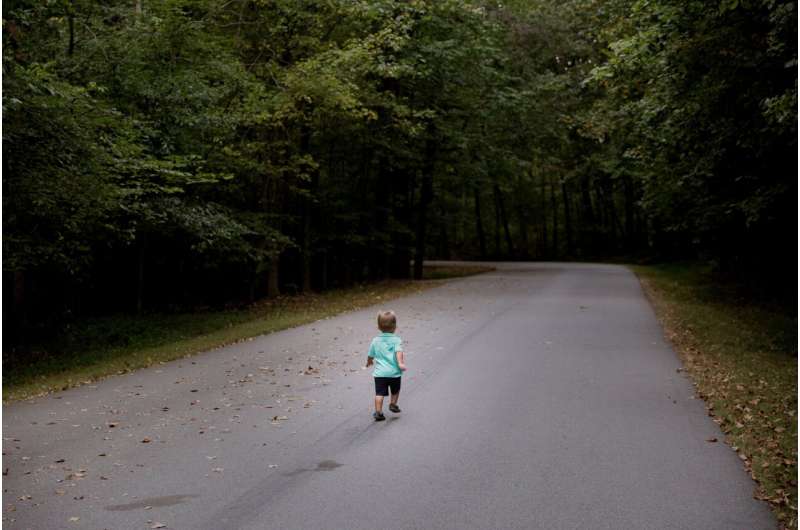Teachers are critical to detecting and reporting child maltreatment

School closures during the height of the COVID-19 pandemic may have resulted in at least 5,500 fewer reports of endangered children, according to a new study showing teachers' essential role in the early detection and reporting of child maltreatment.
Time spent in school and the resulting contact with teachers and other school staff leads to increases in reports of child maltreatment—cases that would not have been discovered otherwise, the study found.
"Child maltreatment is a vexing problem in the U.S.," said Maria Fitzpatrick, professor of economics and public policy in the Cornell Jeb E. Brooks School of Public Policy. "To protect children, we need to better understand why so many are maltreated—13% according to one study and 4 in 10 according to another. Maltreatment has significant costs for society. Early detection is crucial because it leads to quicker intervention and that can result in providing a child with a safe, permanent home."
The study, "Beyond Reading, Writing and Arithmetic: The Role of Teachers and Schools in Reporting Child Maltreatment," was published July 11 in the Journal of Human Resources.
Maltreatment is not limited to child abuse. According to the New York State Office of Children and Family Services, maltreatment refers to "the quality of care a child is receiving from those responsible for the child. Maltreatment occurs when a parent or other person legally responsible for the care of a child harms a child or places a child in imminent danger of harm by failing to exercise the minimum degree of care in providing the child with any of the following: food, clothing, shelter, education or medical care when financially able to do so."
Prior to the pandemic, the researchers sought to define educators' contribution to identifying maltreated children. That long-term project took on new urgency when schools started to close in the spring of 2020. The number of maltreatment reports dropped, despite concerns that children were more at risk because of rising financial stress on families and more time at home, and even as injuries to children were becoming more frequent and more severe.
In the first two years of the pandemic, kindergarten enrollment plummeted, and older children missed three months of schooling during the spring of 2020 and many more days the following school year. Children were cut off from educators, who are often required by state law to report evidence of maltreatment.
"Our conservative calculations based on our results indicate that approximately 5,500 to 8,000 reports were missed during the pandemic because schools were closed or because children were not enrolled," the researchers concluded.
Additional time in school leads to substantially more maltreatment investigations, they found.
For example, the number of investigated reports for 5-year-old children is 5% to 10% higher for those who are eligible to enroll in kindergarten at age 5 than for those who are not, the researchers said.
"Moreover," they wrote, "the number of investigated child maltreatment reports is 30% to 65% higher at the beginning and end of the school year compared to the beginning and end of summer when children are not regularly interacting with teachers."
The researchers said their findings have three major policy implications:
- Discussions about the amount of time students spend in school, including the length of the school day and public preschool, should include estimates of the improvement of child well-being that would result.
- The ramifications of the recent increase in homeschooling must be better understood. The surge in homeschooling may be resulting in fewer child maltreatment reports because children are not interacting with the mandated reporters in school systems.
- Training of education professionals in identifying and reporting maltreatment is uneven. More consistent, higher-quality training will help teachers detect more endangered children.
"We ask so much of our teachers and so many of them have performed with great courage and perseverance during the pandemic," said Fitzpatrick, who is also senior associate dean of academic affairs for the Cornell Brooks School and associate vice provost for social sciences in the Office of the Vice President for Research and Innovation. "As a society, we owe more to them so that they can do a difficult part of their job with skill and take the steps necessary to protect the children they see every day."
The research team also includes Cassandra Benson of the U.S. Air Force Academy and Samuel Bondurant of the U.S. Census Bureau.
The researchers based their findings on several data sources, including the National Child Abuse and Neglect Data System's Child File and public school calendar start and end dates to examine how the number of investigated reports differs between the academic year and summer break.
More information: Cassandra Benson et al, Beyond Reading, Writing, and Arithmetic: The Role of Teachers and Schools in Reporting Child Maltreatment, Journal of Human Resources (2022). DOI: 10.3368/jhr.0319-10084R2
Journal information: Journal of Human Resources
Provided by Cornell University



















